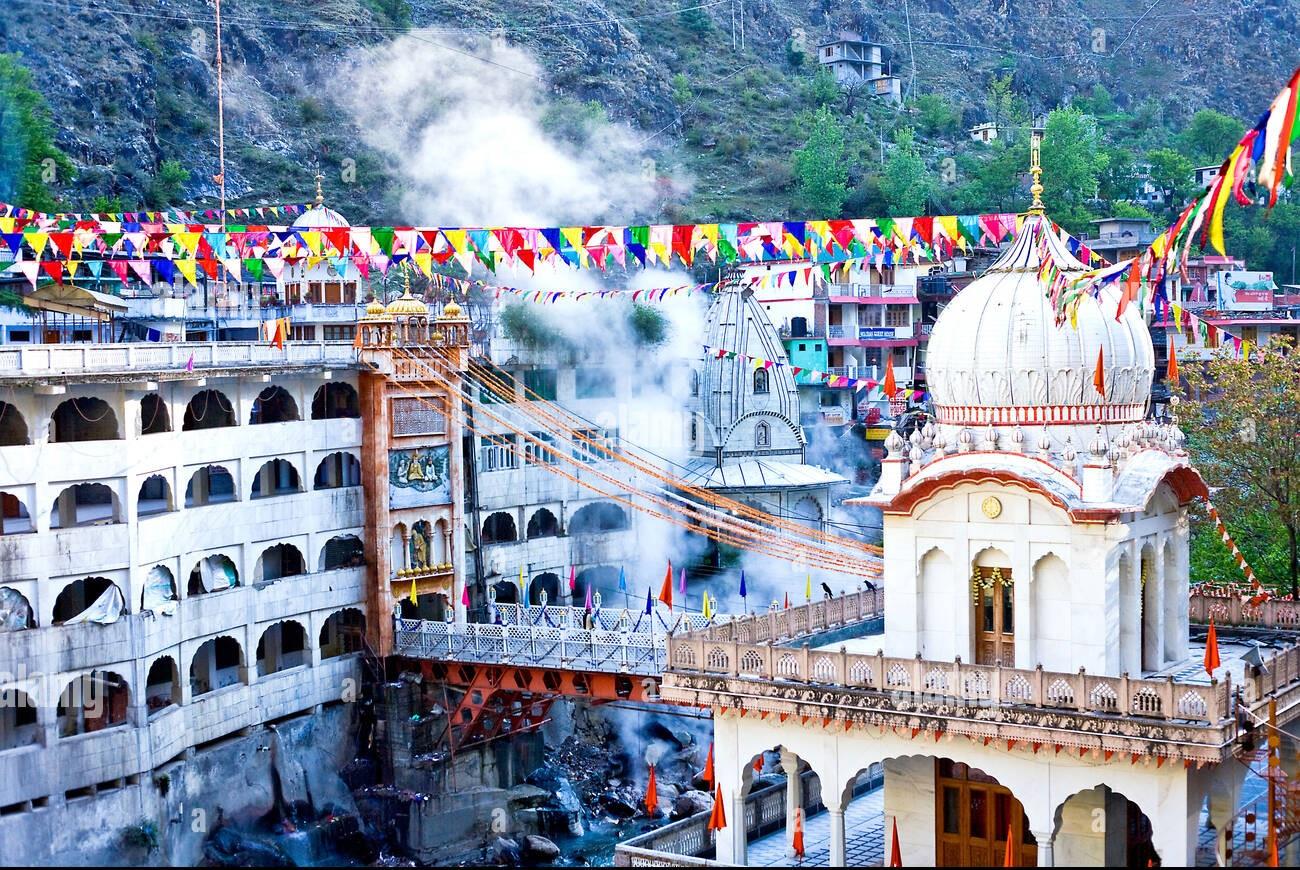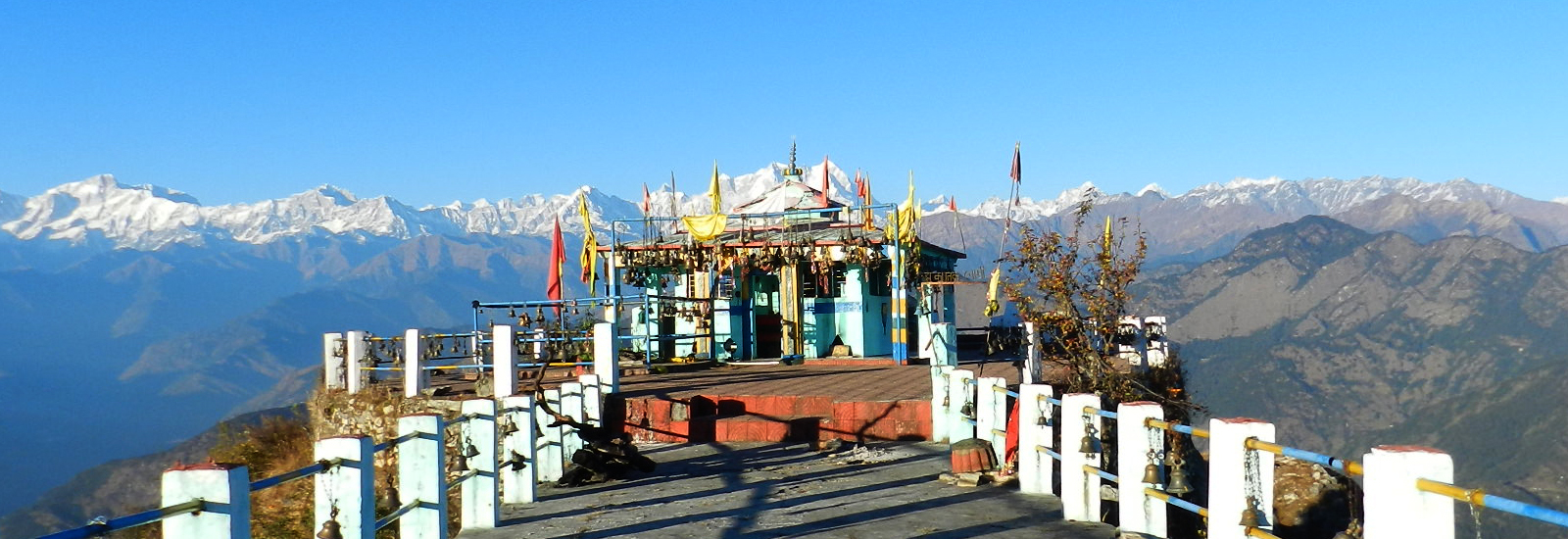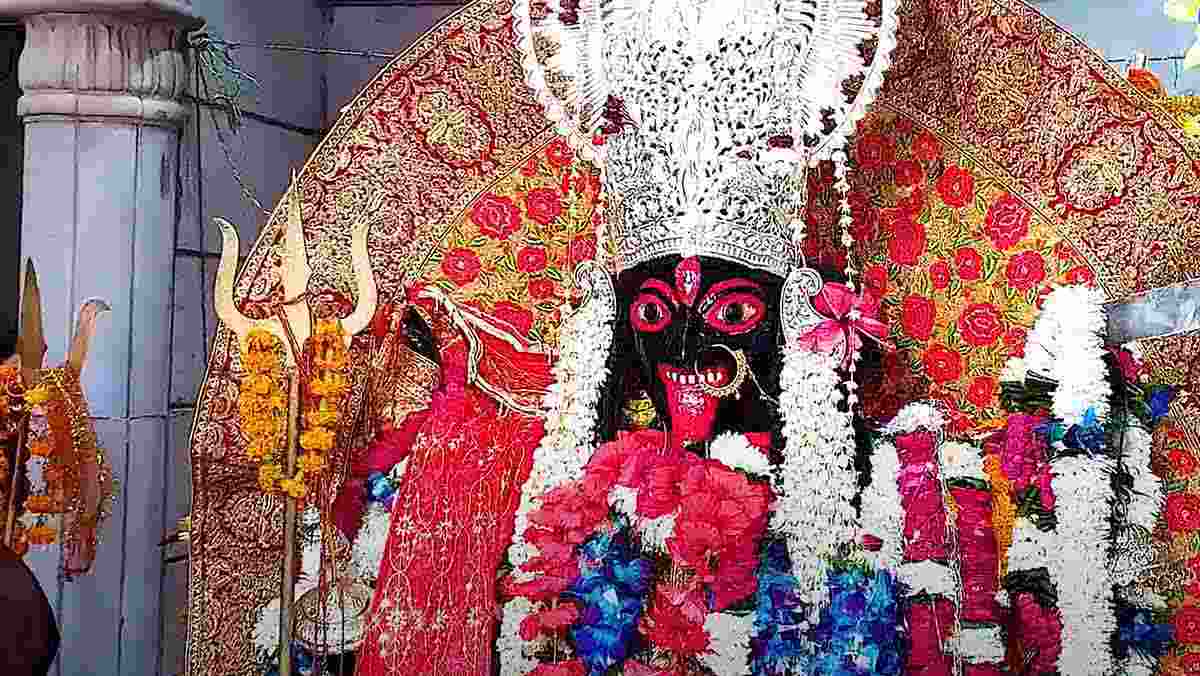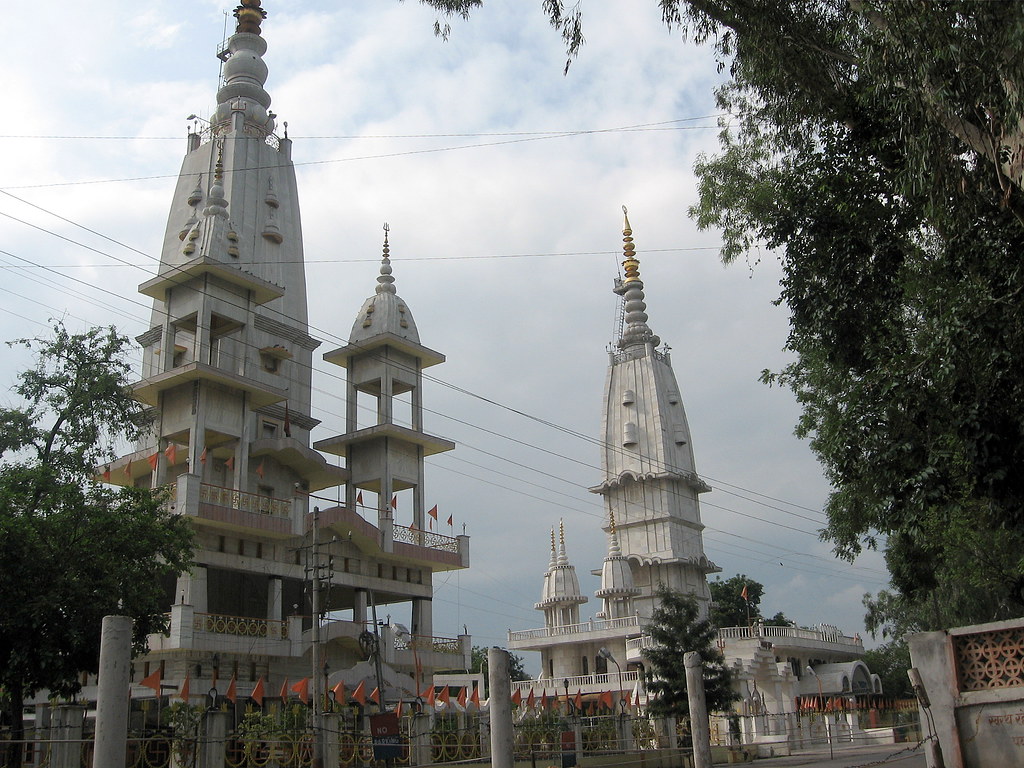
Mahakaleshwar Temple
The Mahakaleshwar Temple is a prominent Hindu temple located in Ujjain, Madhya Pradesh, India. It is one of the twelve Jyotirlingas, which are considered to be the most sacred abodes of Lord Shiva according to Hindu tradition. The temple is dedicated to Lord Mahakaleshwar, a form of Lord Shiva who is believed to be the presiding deity of time. The lingam (symbolic representation of Lord Shiva) at the Mahakal shrine is known to be swayambhu, meaning it is self-manifested and derives power from within itself.

Unique Features and Significance
The Mahakaleshwar temple has some unique features and holds great significance in Hindu mythology and tradition. Here are a few key points:
Dakshinamurthi Idol: The idol of Mahakaleshwar is known as dakshinamurthi, which means it is facing the south. This is a unique feature upheld by the tantric shivnetra tradition and is found only in Mahakaleshwar among the 12 Jyotirlingas.
Re-offering of Prasada: It is believed that the prasada (holy offering) offered to the deity at Mahakaleshwar can be re-offered, unlike in other shrines
Link with Past Traditions: The temple of Mahakaleshwar is said to dominate the life of the city and its people, providing an unbreakable link with past traditions
Architectural Style: The Mahakaleshwar temple has been built in a combination of Maratha, Bhumija, and Chalukya architectural styles. It has five levels, one of which is underground.
History and Reconstruction
The exact origins of the Mahakaleshwar temple are not clear. However, it is believed to have been built in the 6th century AD by Kumarasena, the son of a former king of Ujjain, Chandpradyot. The temple underwent reconstruction in the 12th century AD under King Udayaditya and King Naravarman. In the 18th century AD, the Maratha commander Ranoji Shinde, under Peshwa Bajirao-I, renovated the temple.
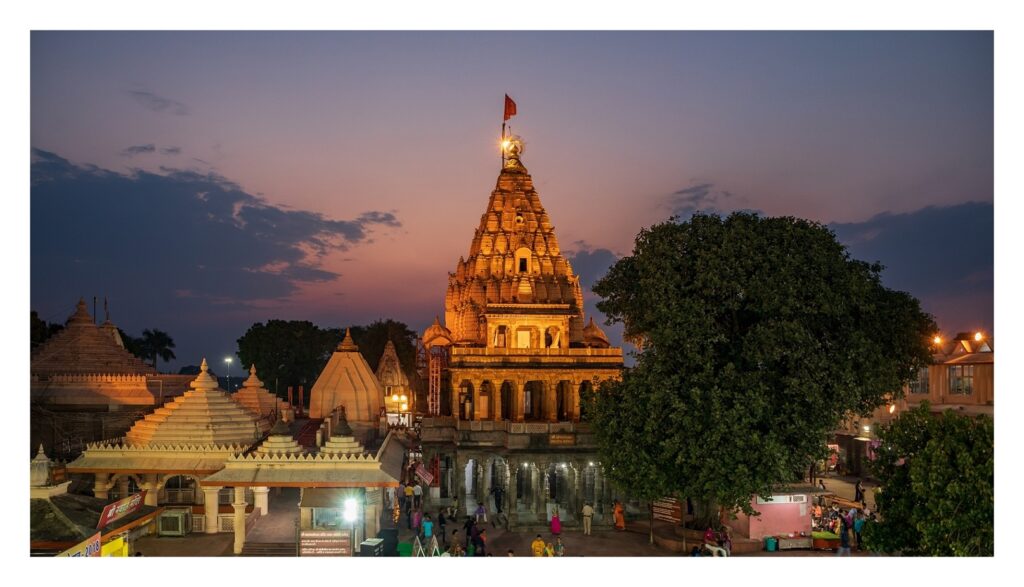
Visiting the Temple
If you are planning to visit the Mahakaleshwar temple, it is advisable to stay in touch with a pandit (priest) as the entrance to the temple can be a bit difficult to find. There is also a VIP ticket available, but it only allows you to see the Jyotirlinga from a distance.
The temple is open for darshan (worship) daily, and special rituals like the bhasm aarti (ash ritual) take place early in the morning. It is recommended to check the timings and make any necessary bookings in advance, especially for popular events like the Mahashivratri festival.
Is Mahakaleshwar a famous Hindu temple?
Yes, Mahakaleshwar is indeed a famous Hindu temple. It is located in the ancient city of Ujjain in the Indian state of Madhya Pradesh. The temple is dedicated to Lord Mahakaleshwar, a form of Lord Shiva, and is considered one of the 12 Jyotirlingas, which are believed to be the most sacred abodes of Lord Shiva.
The Mahakaleshwar Temple is known for its unique architecture, which combines both Hindu and Buddhist styles. It is a five-storey building and houses the presence of various gods such as Ganesh, Parvathi, Karttikeya, Nandi, and Nagchandreshwar. The temple complex consists of several shrines dedicated to different deities, including Lord Shiva, Lord Ganesha, and Goddess Parvati.
The temple holds great significance in Hindu mythology and tradition. It is believed that the lingam (symbolic representation of Lord Shiva) at the Mahakal shrine is swayambhu, meaning it is self-manifested and derives power from within itself. The Mahakaleshwar Temple is also known for its association with ancient Hindu traditions and its link to the city and its people.
Reasons for the Fame of Mahakaleshwar Temple
The Mahakaleshwar Temple in Ujjain is famous for several reasons:

- Jyotirlinga: The temple houses one of the 12 Jyotirlingas, which are considered the most sacred abodes of Lord Shiva in Hindu mythology. These Jyotirlingas hold immense religious significance and attract millions of devotees.
- Unique Architecture: The temple’s architecture is a blend of Hindu and Buddhist styles, making it visually captivating. Its five-storey structure and intricate carvings showcase the rich cultural heritage of India.
- Swayambhu Lingam: The lingam (symbolic representation of Lord Shiva) at the Mahakal shrine is believed to be swayambhu, meaning it is self-manifested and derives power from within itself. This adds to the spiritual significance of the temple.
- Pilgrimage Site: The Mahakaleshwar Temple is a major pilgrimage site for devotees of Lord Shiva. It attracts a large number of devotees from all over the world who come to seek blessings, offer prayers, and participate in religious rituals.
- Historical and Cultural Importance: The temple has a long history and is deeply intertwined with the city of Ujjain and its people. It is considered a symbol of the city’s heritage and is an important center for learning about Hindu philosophy, astrology, and Sanskrit.
- Religious Festivals: The temple is known for its grand celebrations of religious festivals, such as Mahashivaratri, which attracts a large gathering of devotees. These festivals add to the fame and vibrancy of the temple.
What is the significance of Bhasma Aarti ?
The Bhasma Aarti at Mahakaleshwar Temple holds great significance in Hindu mythology and is performed as a sacred ritual to honor Lord Shiva.
The Bhasma Aarti holds great religious significance among Lord Shiva devotees and is a prominent ritual at the Mahakaleshwar Temple in Ujjain. Here are some key points regarding the significance of the Bhasma Aarti:

- Sacred Offering: The Bhasma Aarti involves the offering of sacred ash (bhasma) to Lord Mahakaleshwar. The ash used in the ritual is typically obtained from funeral pyres, symbolizing the impermanence of life and the ultimate reality of death. It serves as a reminder of the transient nature of existence and the need to detach from worldly attachments.
- Purification and Spiritual Awakening: The Bhasma Aarti is believed to purify the mind, body, and soul of the devotees. It is said to cleanse one’s sins and negative energies, promoting spiritual growth and awakening. The ritual is considered a powerful means of seeking blessings and divine grace from Lord Shiva.
- Symbolism: The ashes used in the Bhasma Arti represent the ashes of the dead, signifying the cycle of life, death, and rebirth. It serves as a reminder of the ephemeral nature of human existence and the ultimate truth of mortality. The ritual encourages devotees to reflect on the transient nature of life and focus on the eternal aspect of the divine.
- Connection with Lord Shiva: The Bhasma Aarti is a way for devotees to connect with Lord Shiva on a deeper level. It is believed that participating in this ritual with devotion and sincerity can invoke the blessings and grace of Lord Mahakaleshwar. The experience of witnessing the Bhasma Aarti is considered spiritually uplifting and transformative.
- Unique Ritual: The Bhasma Aarti at the Mahakaleshwar Temple is distinctive and draws devotees from all over the world. It is the only temple where this particular ritual is performed. The exclusivity of the Bhasma Arti adds to its significance and attracts devotees seeking a profound spiritual experience.
Read Also: 2. Kedarnath Temple Best Religious Tourism Places in India




